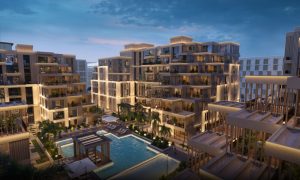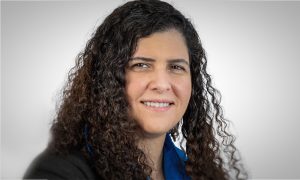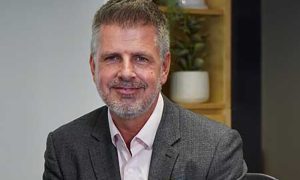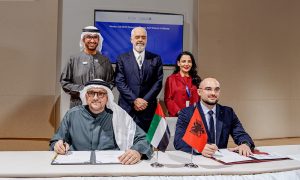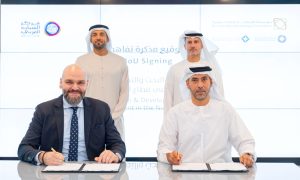An education in construction: On site at Jebel Ali School, Dubai
Big Project ME tours the new campus of Jebel Ali School, where construction work is in full swing ahead of the project deadline at the end of August

Schools are strange things indeed. Ranging in size from single rooms in far-flung villages, through to grandiose ancient estates on sprawling grounds, they are places for children to develop, learn and play with their peers in a warm and nurturing environment.
These institutions can be bastions of learning and education, and also places of fun and excitement where children have some of their most formative life experiences on sports fields and in classrooms. In fact, it can be argued that schools are actually cultural flag bearers for entire countries, where young minds are provided the guidance to become future leaders of nations and captains of industry.
Clearly then, the building of schools is no trifling matter, especially in a country as diverse and vibrant as the UAE. According to the World Economic Forum’s Global Competitiveness Report, the country ranks in the top 10 in the world in terms of the quality of its education system.
Regarded as the GCC’s most developed education sector, the UAE is characterised by a wide presence of private institutions, high participation of the expat population and an increasing score on various education parameters, the report says.
The UAE’s private sector is particularly well developed, with thousands of national and international students enrolled in schools across Dubai and Abu Dhabi. It is estimated that between 2009 and 2014, Dubai alone saw 24 new private schools open, while student numbers increased at an average annual rate of 7.1% over the same period.
With expatriates accounting for 85% of the UAE’s total population, enrolment rates in the UAE are only expected to rise in the private school sector. The school-going population is in fact expected to increase at an average annual rate of 3% to about 1.5 million in 2017.
Given the figures being bandied about, it is no surprise that even schools with a long and illustrious history in the UAE are looking to upgrade and develop , to stay relevant in an increasingly competitive market. Therefore, Big Project ME was invited to visit the construction site of the new home of the Jebel Ali School, one of the oldest and best-known British curriculum schools in Dubai.

Situated in a corner of the gigantic Damac Properties-owned residential development Akoya, the school is scheduled to open on August 28, 2016. Work on the project is in full swing as the contractor, ALEC, looks to meet its construction deadline.
“Jebel Ali School is a non-profit, British curriculum school. It was established almost 40 years ago and is one of the oldest schools in the country,” says Glen Harris, project director for Turnkey Project Management, the consultancy tasked with overseeing the delivery of the school in time for the new school term. “This school is unusual in that it doesn’t have a sponsor. It was established through a royal decree by the ruling family. Secondly, it’s not-for-profit, which is also unusual, compared to most schools in the country who are set up to make money. In Jebel Ali School’s case, the fees which are charged and are considerably below the market rate, never leave the school. They are only used to pay the staff and to provide a quality education.”
In the broader context of the development of Dubai, this meant that the school enjoyed rent-free status on the land it was developed on in Jebel Ali. However, as Dubai continued to evolve and grow, this land was eventually transferred to Nakheel, the developer famous for the Palm Jumeirah and other well-known projects. This meant the school’s rent-free status was threatened, posing problems for its plans to develop and expand, Harris explains.
“The school was also under a lot of pressure from parents, first of all, to expand. Because there’s a huge waiting list, they wanted a pathway from primary school through to secondary school for their children. That couldn’t happen on the present plot.
“So we started to look for plots close to Jebel Ali which were the right size. Eventually, after an extensive search, we found a spot in Akoya, which is in a good location and at 33,000sqm is also big enough [to expand].”
However, this posed a further challenge – how to finance the project. Because of its status as a non-profit school with no sponsor, the school did not have any collateral to fund the construction of a new campus. Going to a bank and simply getting the funds was also not an option for the same reason, says Harris.
“Eventually, we decided to go for a model where a funder builds a school and then leases it back. After many months of discussions and negotiations, I finally convinced Emirates REIT to take on the project. This project is unusual because it’s based on a develop lease back structure. This was the first time ever that this style of transaction was used for an education project in this country, possibly in the region.
“It’s a simple concept, but it’s also complicated. It’s simple in that the school is in charge of the design within a set budget. A funder pays for the land and for the construction costs, so ultimately land cost, construction costs and transaction costs form a total project budget which the school’s annual rent is based on.”
Another major hurdle for the project, even before work started, was the appointment of the main contractor to ensure that construction finished on time. Harris explains that in order for things to get underway, the chosen contractor had to buy into the project and give a lump sum estimate, based on a concept design.
This means that there would be no bill of quantities and no detailed specifications, only a concept drawing. Clearly it was a job that required a contractor with considerable faith in its ability to deliver, especially since it would be working to a fixed deadline and within a fixed budget.
Enter ALEC. The Dubai-based contractor has earned itself a reputation as a deliverer of challenging projects, and the Jebel Ali School promised to test that reputation to the limit.
Carl Wamsley, senior contracts manager at ALEC, freely admits that the project has been neither easy nor conventional. However, he asserts that ALEC’s culture as a business is to test itself in difficult conditions and to come out on top, and the challenge posed by the Jebel Ali School was one it was never going to back down from.
“We focus and pride ourselves on our ability to deliver for all our clients. But this project is a little more special, with it being a school,” he says. “Jebel Ali School is an important client like all of our other clients, and our commitment to them is the same. We want to deliver to the best of our abilities, but when you take on a project that has 1,000-plus children, with 2,000-odd parents, all relying on the facility to be finished ‘on time’, regardless of any delays, then that certainly adds a bit of pressure!”
Further complicating matters was the fact that the contractor had originally agreed to a 12-month construction schedule. However, in a perfect example of Murphy’s Law, when foundation work was finished, the project team found that the affection plan had to be changed. Obviously this meant that the whole project was stopped, because the municipality demanded that everything had to be resubmitted.
“It’s not been easy, it’s not been a conventional project,” says Wamsley. “If there are delays on a project due to design changes, authority approvals and so on, then through the contract, the main contractor is entitled to an extension of time, with costs.
“But on a project like this, with a fixed opening date for when children arrive at the end of August, then you can’t do that.”

Time is certainly not the project team’s friend in this instance. Following the delayed start, Wamsley and his team were faced with the target of completing the school in six months, rather than the agreed 12, while also coping with the impact of reduced hours during Ramadan and the summer months.
Undaunted, the ALEC team threw everything it had at construction, embarking on a programme that involved close to 1,500 workers operating in three shifts, around the clock, seven days a week.
“The amount of effort that we’ve put in, as a management team on this project, is the same that we’d put into a 100,000sqm hotel or a 200,000sqm shopping mall. It’s just numbers and the effort that’s been put in by everybody,” Wamsley says.
“I’ve been in the country for 10 years, and for me, this year has been the toughest Ramadan and summer working year that I’ve ever experienced. There’s a couple of reasons for that – one is that with Ramadan coming in summer, the pressure on the project [was immense], to get things done in this period of time [was very difficult].
“Coincidentally, a lot of our previous projects have been finished in December or January. Therefore, you can go through the summer months with low production and high absentee numbers, but come September, you’ve still got four or five months where you can make up the time lost and get the job over the line,” he says.
“But we’re still here now, we’ve just gotten over with the Ramadan and Eid periods, but we’re still in midsummer and we’ve got a lot of work to finish with the externals and all before the end of August.”
With the punishing schedule in mind, ALEC has been mindful of the workload and exertion put on its workforce on-site. Therefore, the team has been divided into three shifts, with one shift of 800 people running from 6:30am to 6:30pm, a second shift of 250 people working from 2am through to 12:30pm, and a third shift operating from 3:30pm to 2am. In this manner, says Ehab Jamal, the team hopes to cover the 24 hours a day, seven days a week schedule with minimal time lost.
“We keep trying to monitor the progress. If there is a need to shift people from one shift to another, then we keep on top of that. Sometimes it does happen that we have to transfer people between shifts, it depends on the activity,” says Jamal.
“When we were doing concrete, this shift was done at night. If we were doing other finishing work that was inside, then that would be the day shift. It was difficult to coordinate all of this with our subcontractors as they had their own arrangements, so we all had to work together. It was difficult, but in the end we’ve managed to make good progress by combining these three shifts together,” he adds, explaining that with the finish line in sight, the numbers on-site are being reduced to 1,200, down from a peak of 1,450.
Coordination and collaboration was clearly an important factor in the success of this project, given the compressed time frame. Wamsley explains that because the school was a design and build project for ALEC, transparency and communication allowed them to pre-empt problems before they became critical.
“One of the benefits of a design and build project is that you’re involved in the design process of the MEP systems, for example, right from the early stages. So that means our MEP team was involved from the beginning and they could, and have, stepped in at certain points and simplified or value engineered systems to bring them in line with best practice.
“This includes using materials that are available, which helped us speed up construction. There’s been things that we’ve done that have helped us build as quickly as we have. I would say that’s actually helped us massively!”
Ehab Jamal adds that although the project was relatively simple in terms of the design and engineering, the tight schedule made it imperative that the right materials and suppliers be used and delivered on time. To that end, the team was in constant, early communication with the client, allowing decisions to be made quickly.
“There were some good decisions made at the beginning of the project, with the client. All the internal walls are solid block and we could thus bring in a new system of partitions which were fit for purpose. These saved a lot of time as they were new materials. I believe that it was one of the biggest decisions to make, and we did it early. Using them allowed us to build very quickly.
“We also used a new system for the facades on all the elevations for the building. Again, that system was fast. We saved time doing the plastering and the normal trade works. These were two items that we used on the project, the rest of the time it was just normal construction methods. It was key to keep our focus and to keep moving.”
An important contributor to the pace of construction was the client itself, says Carl Wamsley. Not only did it make good, early decisions on the project, but it was also flexible and willing to listen to the ALEC team when it came to sourcing and supplying materials for the project.
“I would say that what really helped us to do this project is the relationship we have with the client. On any project, you can’t build if you don’t have the materials. If there was a particular material that had been specified, and it had a long lead time, we could speak to Glen and the school, have a frank discussion with them and then say that ‘This is the product that’s been specified. It’s going to take too long or will cost too much. Can we look at an equivalent instead?’
“The school has been very accommodating in that way. They may not know it, but they’ve made a massive contribution to the speed of the project, in terms of how we can build so quickly. The building is 98% complete, within five months, and that’s not just because of hard work, but also because the materials that have been used on the project, most of them have come when we needed them.”
As construction manager, handling the logistical challenge of moving these materials and workers through the site was down to Ehab Jamal and his team. He explains that they had to deal with a number of logistical issues, starting with the delay in starting construction, which meant the project team could not work in sequence. To save time, the project team had to work everywhere at the same time.
“To achieve this was very complicated. We had to change our access and egress points to the site many times. We had to shift the site offices three times,” he illustrates. “In the meantime, we had to have full coordination with the developer, and we had to coordinate everything through Dubai Municipality.
“We faced a number of issues, we did have logistic challenges with our neighbours, but we had to manage and deal with all of them. By facing up, coordinating with the developer and the authorities, we could manage them. It has not happened smoothly and it was tough, but we’ve achieved what we had to do,” he states proudly.
Although work continues around the clock on the project, all three men are confident that the end of August deadline will be met, with Glen Harris in no doubt as to who to thank for that.
“I think the school has been very lucky, extremely lucky in fact, that it’s had a contractor like ALEC on board. To make these kinds of projects work, you need to take real ownership of the project. A lot of construction companies – and I’ve worked with many over the years – will do what they have to do contractually, but if there’s a problem, they’ll stop and write you a letter.
“ALEC is not like that. They’ve said, ‘We’ve promised that we’re going to deliver a school, and we’ve been promised a contract that would take 12 months, but things have happened. It doesn’t matter. We’ve made a promise and we’ll stick to it.’
“I think the school is very lucky to have a team of people like that to drive the project forwards,” Harris says. “And one last thing. We’ve spoken about this being a six-month project. I’ve been in this country for nearly 20 years and I think, from my recollection, that the record was nearly eight months to deliver a school of this size. So to now do it in six months, with Ramadan and summer work restrictions, it’s almost unbelievable.”
“There’s not many construction companies that I know of who would be able to do that!”
Project details
Project Name: Jebel Ali School (New Campus)
Project Size: 33,000sqm
Total Student Population: 1,850 (approx) from 650 (present-day size)
Main Contractor: ALEC
MEP Contractor: ALEC (Facilities Management Division)
Facades: National Aluminium
Facade Wall System: EIFS – installed by NAGI Interiors
Interior Walls: Ishtar Décor
Structural Steel: Perfect Engineering
Internals and Finishes: Alamis (joinery), Al Rawda (partitions and painting), Al Shamsi (vinyl) and Interspace (carpets and wooden flooring)
Specialist fit-out: Manser Saxon
Elevators: ThyssenKrupp


